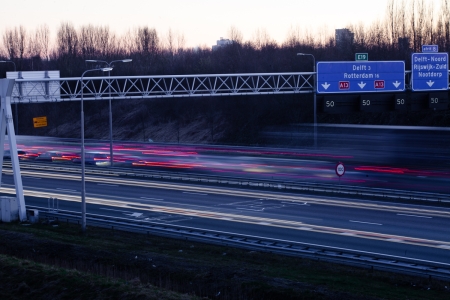It is estimated that in 15 to 20% of crashes driver fatigue is a contributing factor. However, estimates in individual studies vary widely (from 5 to 50%) [2] [3] [6] [7] [9] [10] [11] [12] [13] [14] [15]. The wide range is mostly caused by the definitions and research methodology used to determine whether a crash involved driver fatigue [15]. The lowest percentages originate from analyses of police-registered crash circumstances; the highest from studies that examine whether a crash was related to fatigued driving on the basis of specific crash characteristics (for example no skid marks). Percentages based on questionnaires (self-reported behaviour) are somewhere in between [2]. In general, studies focusing on professional transport/truck drivers find higher percentages than studies focusing on car drivers [9] [14] [16]. For fatal crashes and motorway crashes, the percentages are also higher [13].
Crash circumstances according to police
Up until 2015, Dutch police registered crash circumstances. Fatigue/falling asleep was one of the categories, but was hardly ever used, probably because it was hard to ascertain objectively. Should a driver have been tired, then this fatigue will mostly have disappeared after a crash – which usually leads to stress and elevated adrenalin levels. Neither is it likely that the driver involved will voluntarily admit having been very tired or having fallen asleep. In a police report, causes which are easier to prove will usually be registered, such as not giving right of way/not granting passage or red light negation, yet, in those cases fatigue may also have been a contributing factor. Up until 2015, fatigue/falling asleep was categorised under ‘circumstances’ in an average 1% of the registered fatal crashes. In light of the above, this is almost sure to be a substantial underestimate.
Self-reported behaviour
The involvement of fatigue in crashes is also studied by means of questionnaires in which drivers have to report whether fatigue contributed to the crash. These questionnaires are usually anonymous, meaning that socially acceptable answers are not expected to crucially affect the result. Questionnaire studies usually come up with percentages of 10 to 15% [2].
Crash circumstances
A fatigue-related crash has a number of specific characteristics (no skid marks for instance); also see the question What is typical for a fatigue-related crash?. If some of the specific characteristics apply to a crash, it will be qualified as (probably) being caused by fatigue. Studies that analysed crashes in this way, estimated that fatigue was related to 20 to 30% of the crashes [2].Countries often use different criteria for determining if a crash is related to fatigue [15].
Crash risk
In general, the chances of a crash considerably increase when the road user is tired. Methodologies to determine the chances, and thus the individual study results, widely vary [17]. A 2018 meta-analysis of 14 studies [13] showed a 29% risk increase (OR: 1.29; 95% CI: 1.24-1.34) for tired drivers compared to those who were not tired. A 2014 meta-analysis of 11 studies [18], which specifically focused on professional drivers, arrived at a 72% risk increase (OR 1.72; 95% CI: 1.36-2.18) for drivers who are extremely tired during the day (Excessive Daytime Sleepiness - EDS). EDS is a form of chronic fatigue caused by sleep disorders such as sleep apnoea or narcolepsy which has nothing to do with the amount of sleep (also see the question Which groups are most at risk? ).
